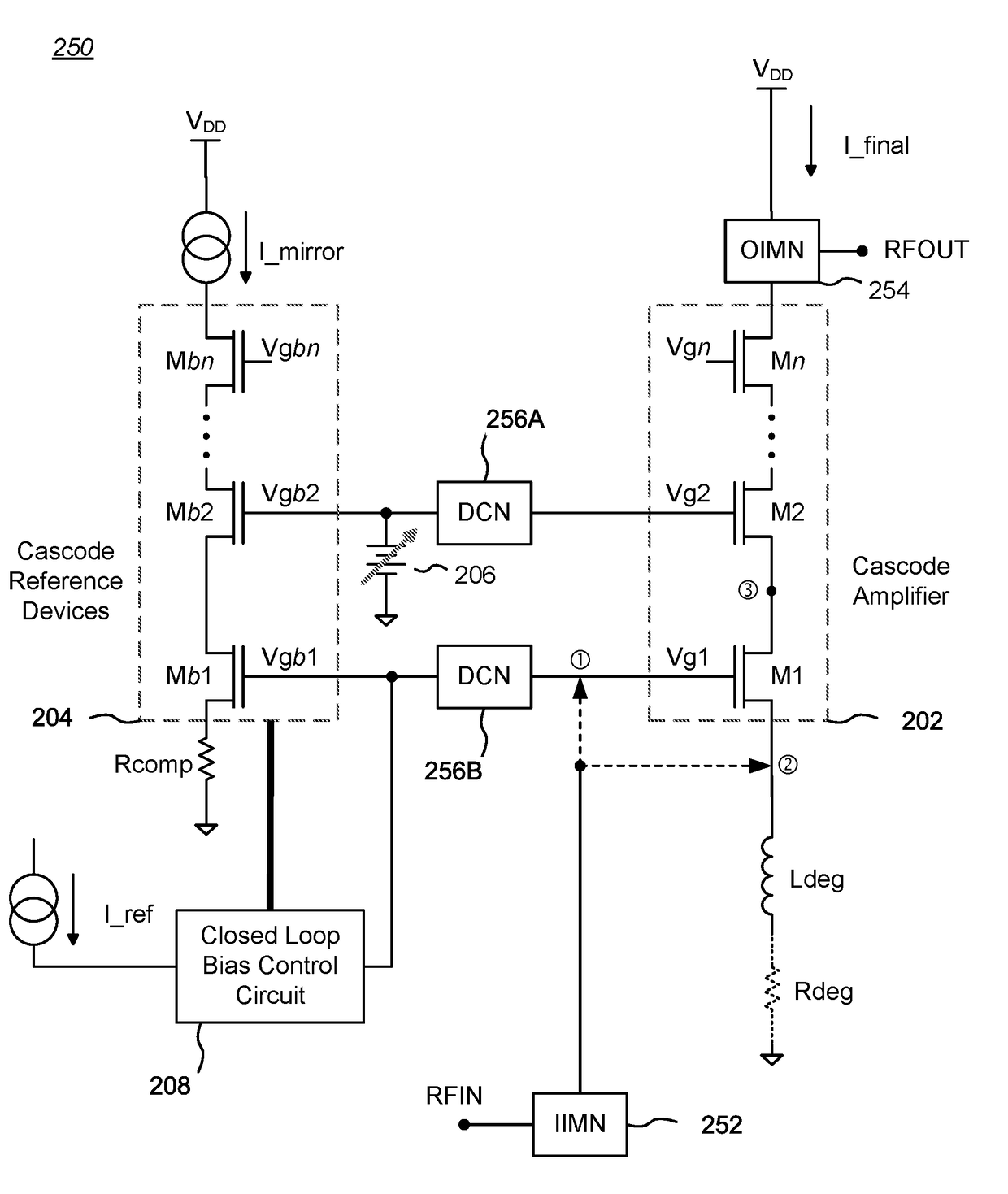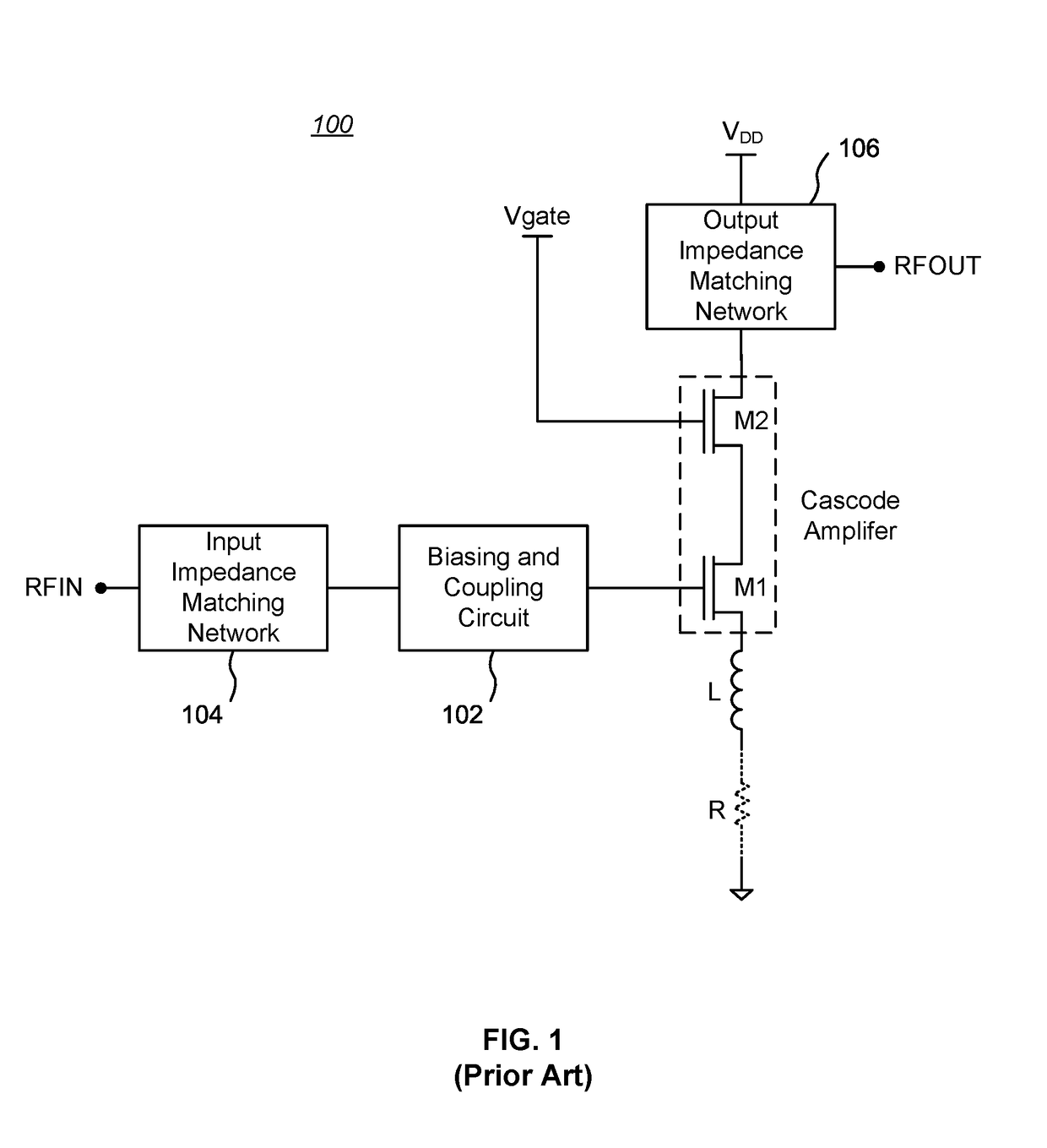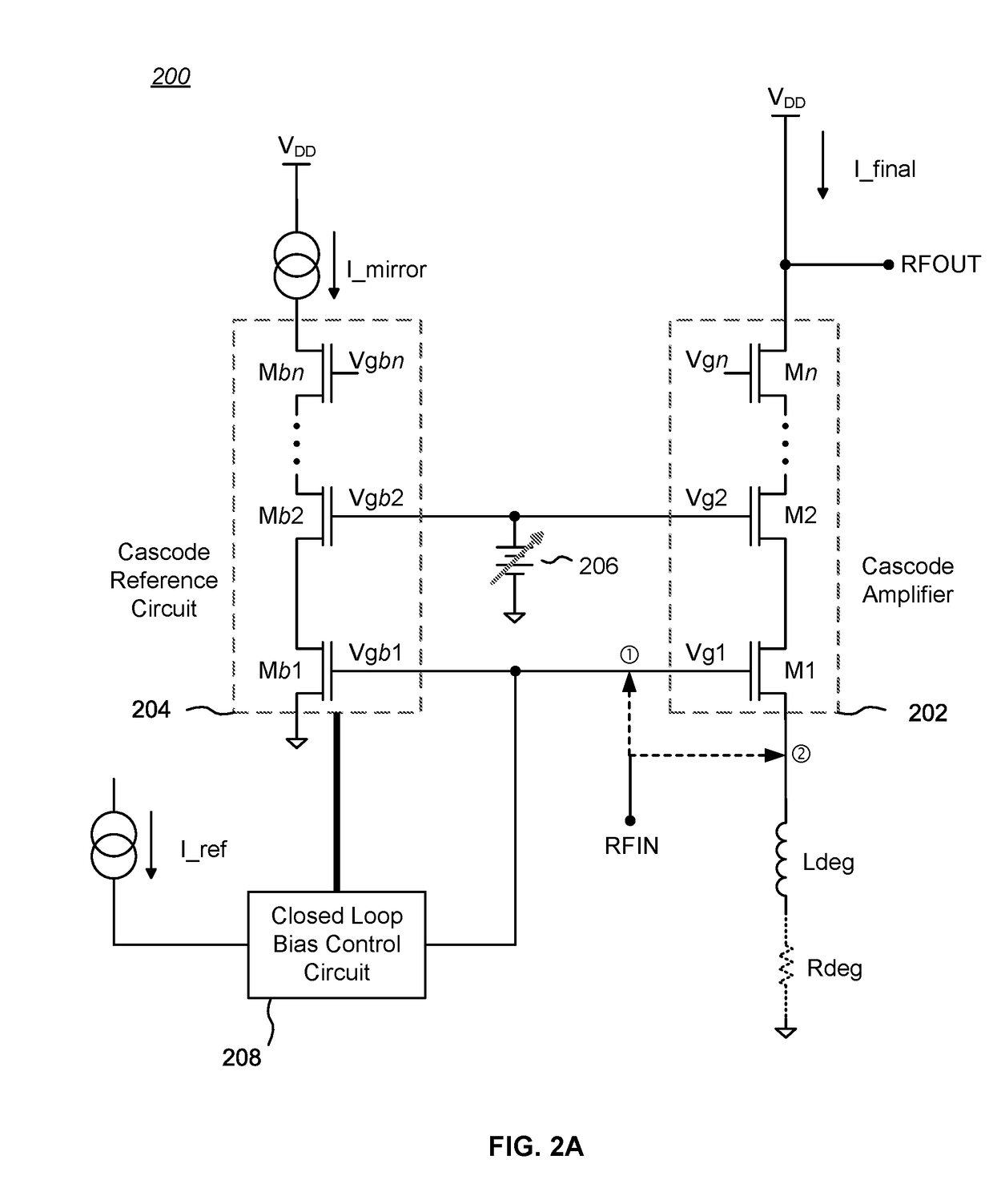Cascode Amplifier Bias Circuits
a cascode amplifier and bias circuit technology, applied in the field of electromechanical circuits, can solve the problems of poor suited circuits, dc supply voltage, etc., and achieve the effects of rapid adaptation to a changing rf electrical environment, poor output resistance characteristics, and good isolation
- Summary
- Abstract
- Description
- Claims
- Application Information
AI Technical Summary
Benefits of technology
Problems solved by technology
Method used
Image
Examples
Embodiment Construction
[0029]The invention encompasses bias circuits and methods for silicon-based CMOS amplifier architectures that are tolerant of supply and bias voltage variations, bias current variations, and transistor stack height, and compensate for the poor output resistance characteristics of silicon-based CMOS devices with short channel lengths. Further, the invention encompasses improved silicon-based CMOS amplifier architectures that can rapidly adapt to a changing radio frequency (RF) electrical environment, and which have good isolation. The disclosed amplifier architectures that are adaptable to a number of amplifier applications, including power amplifiers (PAs) and low-noise amplifiers (LNAs).
[0030]Embodiments of the invention utilize a cascode reference circuit to bias the final stages of a cascode amplifier under the control of a closed loop bias control circuit. The closed loop bias control circuit ensures that the current in the cascode reference circuit is approximately equal to a s...
PUM
 Login to View More
Login to View More Abstract
Description
Claims
Application Information
 Login to View More
Login to View More - R&D
- Intellectual Property
- Life Sciences
- Materials
- Tech Scout
- Unparalleled Data Quality
- Higher Quality Content
- 60% Fewer Hallucinations
Browse by: Latest US Patents, China's latest patents, Technical Efficacy Thesaurus, Application Domain, Technology Topic, Popular Technical Reports.
© 2025 PatSnap. All rights reserved.Legal|Privacy policy|Modern Slavery Act Transparency Statement|Sitemap|About US| Contact US: help@patsnap.com



